JOE AND ROSE SKINNER, PERTH + IAN FAIRWEATHER WORKS FROM THE 1930S AND 1940S
JOE AND ROSE SKINNER, PERTH
SKINNER INTRO_(light) cmyk .jpg
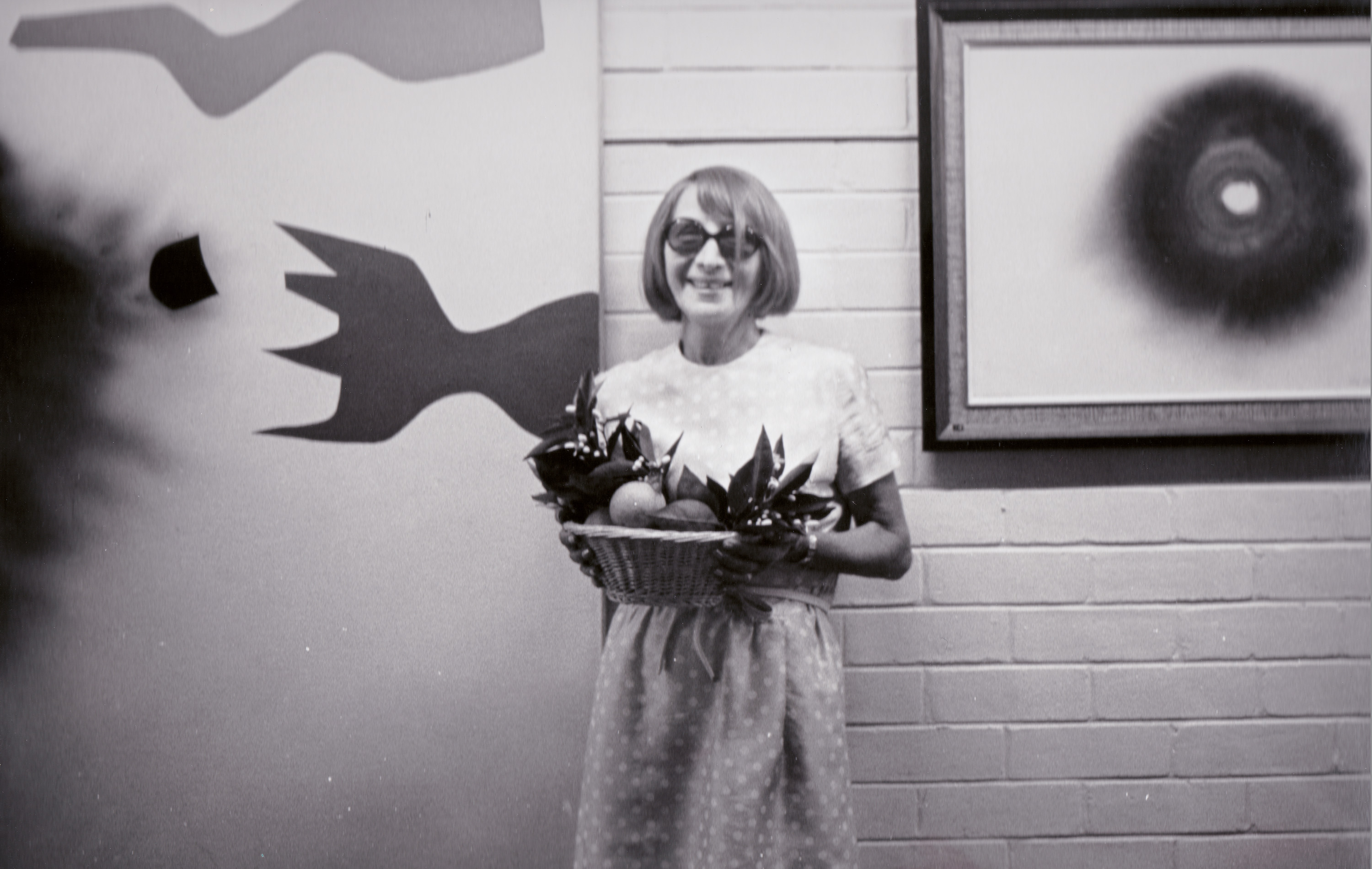
Joe and Rose Skinner were pivotal to the Australian art scene from the early 1950s to mid-1970s. Skinner Galleries was the country’s third professionally run commercial gallery when it opened in Perth in 1958, but significantly, theirs was the first purpose-built space – an elegant modernist enterprise which was itself a statement of intent. Whilst Joe, a developer and astute collector, was happy to remain behind the scenes, Rose became an increasingly powerful and sophisticated gallerist ‘of unusual energy and charm, with formidable powers of persuasion that ranged in tone from authoritative, to cajoling, to coy.’1 Put more bluntly, ‘she could be discourteous to the point of rudeness, and charming to the point of seduction.’2 What cannot be disputed is her superb eye and acutely refined business instincts. Over a period of eighteen years, a roll call of Australia’s leading artists exhibited at Skinner Galleries, often repeatedly, including Sidney Nolan, Arthur Boyd, Judy Cassab, Fred Williams, Robert Dickerson, Margaret Olley, and many, many others. Frank McDonald, a partner in Clune Galleries in Sydney, described Rose as one of the best dealers in Australia who ‘could have taken on Sydney and been as good as Joseph Brown [one of Australia’s most prominent art dealers] … she was a wizard saleswoman.’3 Skinner preferred to describe herself as an agent rather than a dealer – ‘I sell at the artists’ prices. I don’t speculate in pictures’4 – and this combination of vision, ethos and sheer determination led Elwyn Lynn to write in a letter to her in 1966 that ‘the only active person in Perth concerned with the promotion of really modern worthwhile art has been yourself.’5 Between them, the Skinners left an irreplaceable legacy.
Josiah (Joe) Skinner migrated to Perth from England in 1911. He was wounded at Gallipoli (literally saved by two pennies in his trouser pocket) and later prospered by purchasing blocks of Perth CBD real estate. As a developer, Skinner was responsible for some of the more elegant Deco-style hotels and apartments in Perth in the 1930s and 1940s. His politics were left-leaning, and by the time he met Rose, he was a collector of rare books and glass. Rose was the daughter of Polish emigrants who were well connected in Europe, and Rose travelled there regularly with them. Her father was a successful landholder on the Peel Estate south of Perth, and also owned an Indian carpet business in the CBD, which Rose directed until her third marriage, at a mature age, to Joe in 1946. At that stage, she was a tenant in one his buildings (likely the Chelsea Flats on St George’s Terrace) and as Joe would later recall, ‘I couldn’t help running into her now and then. That’s how we eventually got married.’6 By the early 1950s, they had already bought paintings by Sali Herman, Russell Drysdale and Guy Grey-Smith; and in December 1953 Joe ‘walked into Redfern’s London Galleries to enquire about an “obscure” artist who’d shown there previously – Ian Fairweather. A group of paintings left over from an exhibition of his work in the 1940s was brought out from the stockroom and Joe bought the lot.’7 In 1955, the Skinners purchased a two-storey house in Malcolm Street, Perth, which had been built in 1893 for Edith Cowan, the first woman member of an Australian parliament, and her husband, James Cowan. In 1957, Rose began her plans for a gallery.
Skinner Intro - Duke of Edinburgh_cmyk.jpg
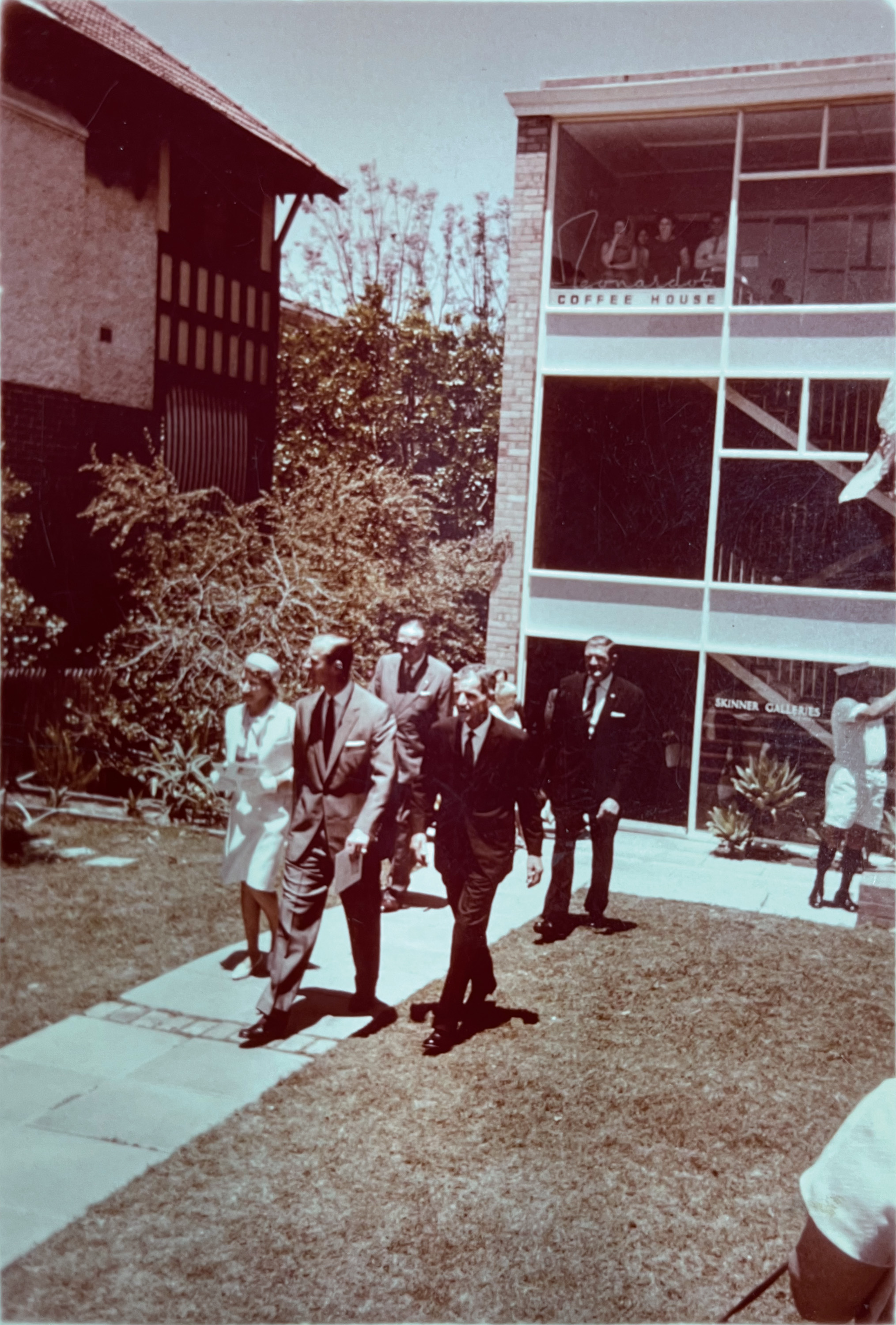
Skinner after opening the Sidney Nolan
exhibition at Skinner Galleries, Perth, 1962
Perth in the mid-1950s was still one of the country’s smallest capitals with just over 350,000 people, approximately half the population of the whole state of Western Australia. There was a nascent modernist art scene featuring names such as Grey-Smith, Howard Taylor, Elise Blumann and a young Robert Juniper, but its exposure to artists with a national reputation was minimal at best. There were no private galleries to speak of, only spaces to hire. In preparation for her venture, Rose met with arts organisations, consulted with the directors of Australia’s state galleries and wrote to international figures.8 It was an ambitious venture and a pre-opening circular heralded an art centre containing recital rooms, a sculpture garden, studios, and art classes, all to be built in front of the Malcom Street house. On 14 October 1958, Skinner Galleries opened to much fanfare and in the catalogue introduction, Rose outlined her ambitious vision alongside a transcribed speech by Walter Gropius. The gallery featured a combination of mosaic tile entry, timber stairs, grand piano, copper fireplace, and parquet floors, whilst on the top floor was Leonardo’s Coffee Shop, which became a popular meeting place for art enthusiasts. It was a spectacular and eventful arrival for Perth and for the Australian art scene as a whole.
Rose was particularly savvy in recognising that Fremantle was the first home port for any Australian artist returning from Britain, which made it easier for her to convince them to stop off for a show at the gallery. A great number of artists were considerably rewarded by showing with Rose, particularly Sidney Nolan whose 1962 exhibition demonstrated her genius for promotion. This was the year that the Commonwealth Games were held in Perth and realising that the Duke of Edinburgh would officially open them, Rose orchestrated for him to also open Nolan’s show. Not surprisingly, it was a complete sell-out, netting £10,000, a huge sum for the day. The Skinners furthered their support by buying art for themselves, and in 1974 Art and Australia featured their personal collection of paintings including Fairweather, Nolan, Matisse, Rouault, Williams and others, set against Persian rugs and suede-covered Bauhaus armchairs.
In her final years, Rose continued her advocacy, campaigning for the artists’ droit de suite, or royalty payable to the artist on each re-sale, ‘indefatigably’ consulting lawyers in Europe and the United States of America.9 Sadly, she suffered a severe stroke in 1975, and the gallery closed in April 1976. Rose died on 17 September 1979, and following Joe’s death in 1985, a major bequest of sixty-eight paintings was gifted to the University of Western Australia. In business and in private, the Skinners were hugely influential as tastemakers for, and supporters of, the Australian art scene. It is with great pride that Deutscher and Hackett has been entrusted with selections from the remainder of their astutely purchased collection.
1. Snell, T., ‘Rose Skinner: the firebrand Perth dealer neglected by a new art history’, The Conversation at: https://theconversation.com/rose-skinner-the-firebrand-perth-dealer-neglected-by-a-new-art-history-72583 (accessed 19 September 2023)
2. Sharkey, C., ‘Rose Skinner, modern art, and the Skinner Galleries’, Early days: journal of the Royal Western Australian Historical Society, Perth, vol. 12, no. 4, January 2004, p. 373
3. Frank McDonald, cited in Snell, op. cit.
4. Rose Skinner, 1974, cited in Hutchings, P., ‘The art collectors 13: The Rose Skinner collection’, Art and Australia, vol. 12, no. 2, October – December 1974 , p. 142
5. Elwyn Lynn, Letter to Rose Skinner, 15 April 1966. Rose Skinner archive, Battye Library, Perth, MN1320, File 5, #143
6. Joe Skinner, 1981, cited in O’Brien, P., Robert Juniper, Craftsman House, Sydney, 1992, p. 36
7. Cruthers, J., ‘Creating taste: the collection of Joe and Rose Skinner’, Art World, Melbourne, April/May 2008, p. 155
8. ibid., p. 154
9. See Hutchings, op. cit., p. 149
ANDREW GAYNOR
IAN FAIRWEATHER | Works from the 1930s and 1940s
DR CANDICE BRUCE
The recent publication of the letters of Ian Fairweather edited by Claire Roberts and John Thompson1has added substantially to our knowledge of the artist: to his biography, his methods of working, his travels, his childhood, his relationships, but most of all, his thoughts and feelings. A solitary man, Fairweather went to great lengths during his lifetime to guard his privacy. He did however share his travails and gripes – which at times were many – as well as his canny observations and troubled emotions, with a handful of friends and family in a lifetime of letter-writing.
Ian Fairweather arrived in Shanghai for the first time in 1929 with a Chinese grammar book, a set of watercolours and a curiosity about all things Asian. He was 38 years old and for many years had nurtured a growing interest in Chinese art, culture and language. He had read key texts on Oriental art and, for at least a decade, had visited the Asian collections at the British Museum and the Victoria and Albert. While studying at London’s Slade School of Art, he also attended Japanese classes at the School of Oriental Studies but found himself increasingly drawn to Mandarin.
P 28 TO 29 FAIRWEATHER intro The Bund, Shanghai, 1930_cmyk.jpg
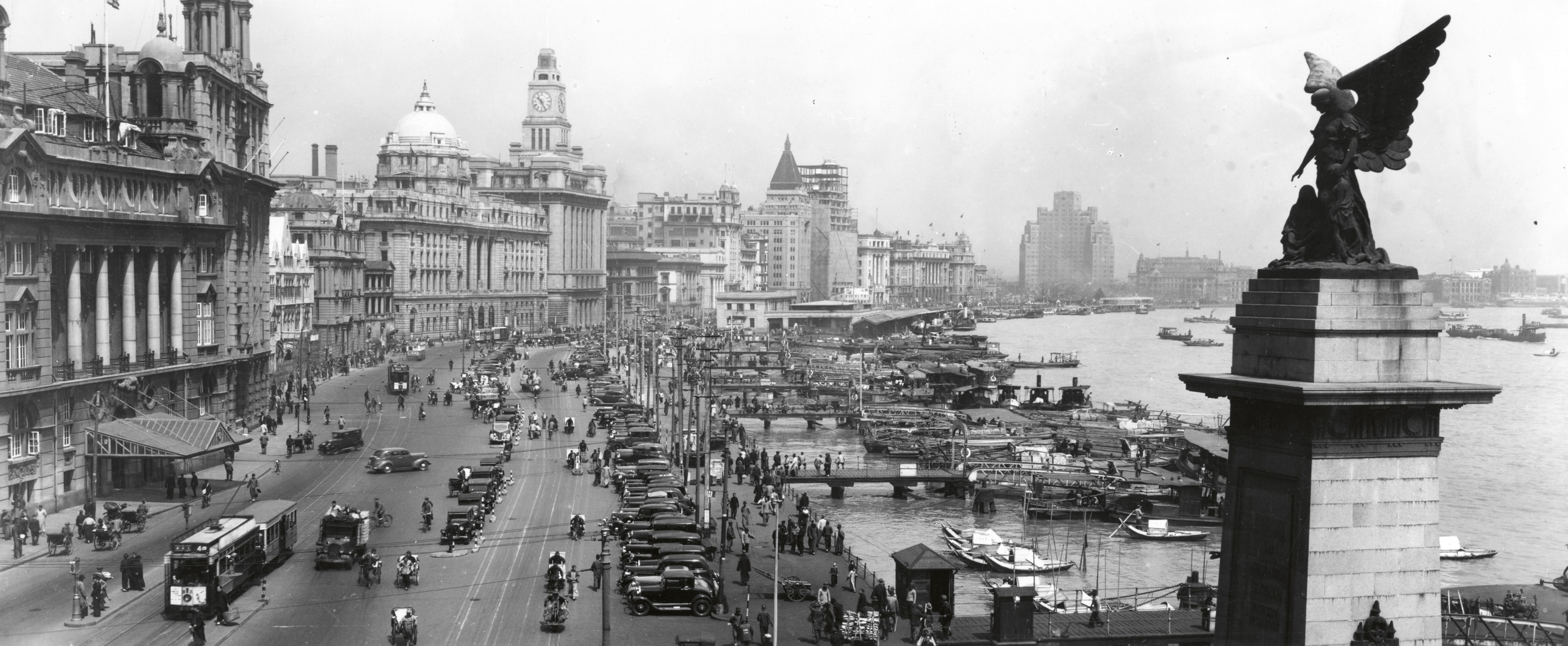
The 1920s had been a difficult decade for Fairweather, characterised by periods of restlessness and depression. Described by his Slade professor, Henry Tonks, as a profoundly melancholy man, Fairweather was sensitive, artistic, solitary and damaged, legacies of both his experiences as a prisoner in Germany during WWI and his conflicted upbringing. Left at the age of six months by his parents when they returned to India with their older children, Fairweather was raised by his elderly spinster aunts and grandmother. Reunited with his parents and eight older siblings at the age of ten, his letters in old age reveal the trauma these events inflicted on him. Intimacy seems to have been impossible. There were no love affairs and few long friendships, his life forever lived at a distance from others.
Unable to settle in post-war England and in conflict with his mother’s conventional expectations (his father had died while Fairweather was still a prisoner), he set off for distant places, living frugally and doing outdoor manual work. He did not know yet how he wanted to paint, or even what for that matter, simply that he did not want to paint the way he had been taught. After visiting Germany and Norway (he relished skiing and mountain climbing), he returned once more to his mother’s house on Jersey, but found family life there stultifying. At the end of that year, he broke finally and forever with his them and in 1928, emigrated to Canada where his older brother Neville lived. At first, he went to remote Saskatchewan, but he soon gravitated to the rugged and empty far west coast, becoming a caretaker on a remote island near Vancouver. Lonely, living an almost feral life with the discarded belongings of his predecessor, a defrocked priest, he had one `relic’ left – his Chinese grammar, printed in Shanghai. Always a believer in omens and fate, was where he decided to head.
He jumped on a ship going west - for some reason Fairweather always believed this was the luckiest direction to travel – and disembarked some weeks later in Shanghai. Shanghai was then known as the ‘Paris of the East’, a sophisticated and dangerous city with a culture that was a fusion of East and West, where great wealth existed alongside great poverty. Fairweather settled in the International Settlement, an enclave outside of the old walled city which, though dominated by the British and holding some 60,000 foreigners, was also inhabited by over a million Chinese. He found a room above a brothel at 235 Szechuan Road overlooking Suzhou (Soochow) Creek and work as a park ranger for the Public Works Department – a `white man’, he wrote, and thus employable in one of the better paid jobs. He earned sufficient money to hire someone to cook his meals and stir his paints and to travel by rickshaw.
FAIRWEATHER INTRO Shanghai post office and Soochow creek, China_cmyk.jpg
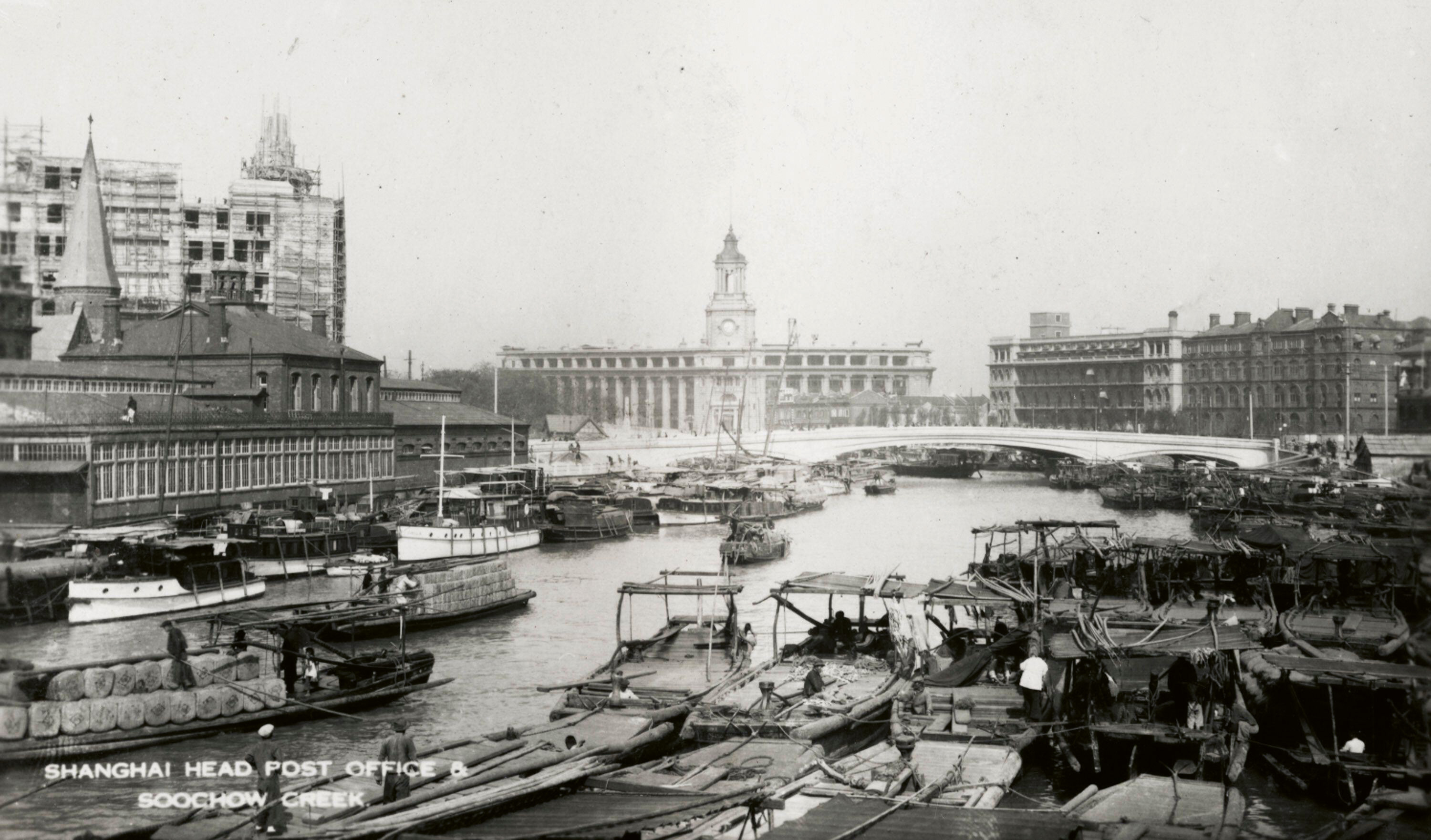
Importantly it gave him the opportunity to move around the city and observe the daily life of the people, and although no works from this time have survived, we know he both sketched and took photographs with a newly acquired Leica camera. Writing in 1963 to his sister Annette (known in the family as ‘Queenie’) he said:
`Too sad – to think I had a Leica camera in Shanghai with projector and all the works – (went broke and had to sell it) it had a cunning viewfinder – it looked round the corner – So you could pretend to be taking a shot in one direction but actually you were taking one at right angles – I had some wonderful days wandering around the markets and villages around S’hai – Had some grand shots of babies and beggars – canals, bridges, junks – alas all gone now…’2
His rented room was high up and spacious and while he painted into the night, the working girls from downstairs would come and sit to chat to each other in their incomprehensible (to him) Shanghai dialect. He used the projector to magnify portions of the photographs, a way of working that possibly had an unforeseen impact on later compositions, many of which have a sense of being part of a larger sequence of activity. Although painted in Australia in the late 1940s, the Chinese subjects in this sale carry a feeling of the swiftly noted scene, the photograph quickly snapped with the Leica. They are rapid, sketchy, full of motion, almost as if the rickshaw driver has just passed by or the clouds still tumbled in the sky. The swiftness of execution is an illusion however for on several occasions Fairweather admitted to being a slow painter who worked and reworked an image. He liked to pin them on the wall, he once said, and let them ‘cook’ and often changed things if he were discontented. Colour is minimised but blue – whether a dark ink or the lighter Reckitt’s – dominates. As Roberts demonstrates in her recent book on Fairweather which draws on his letters and new archival research, his art was indirectly influenced by the pictographs of the Chinese written language, by the shapes and patterns of Chinese characters.3 It was an influence, he later confessed, that he was slow to realise. ‘I didn’t know then that I had the makings of a job in my hands’, he would later write to his nephew and namesake Ian Alister Fairweather, adding that, `art in all its forms is a terrible lonely way of life – unconnected with the everyday world around one.’4
Shanghai-sunsun-1930_cmyk .jpg
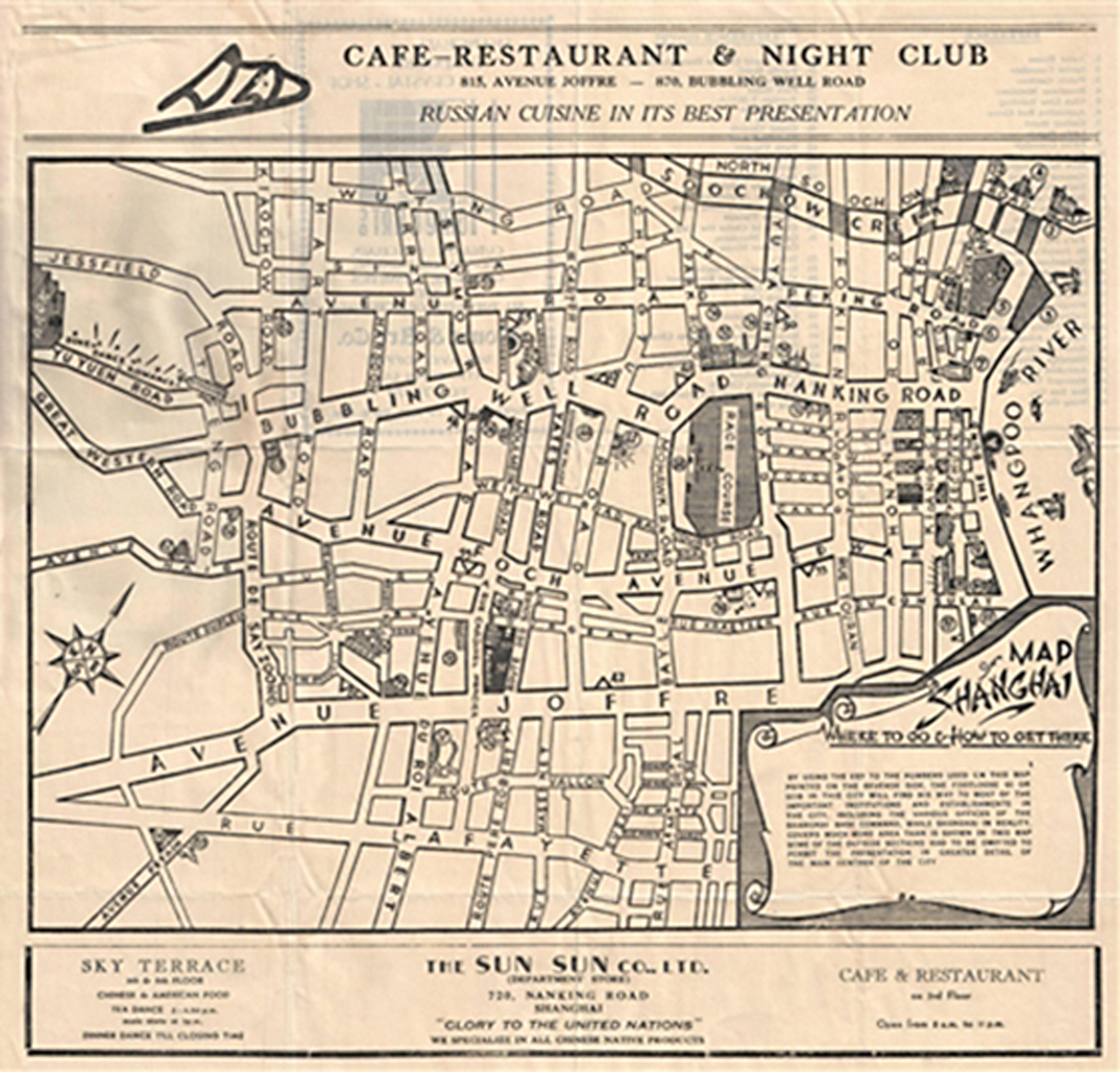
showing all the entertainment establishments in Shanghai, 1930
It was a constant struggle, his art during this period labelled by him, almost pitiably, as ‘his strivings’. Always curious, he made the most of short periods of leave by visiting the surrounding countryside and the ancient towns of Soochow (Suzhou), Foochow (Fuzhou), Hoochow (Huzhou) and Hangchow (Hangzhou). He filled sketchbooks and took notes and photographs of all the most picturesque features – the lakes, the temple gardens, mountains, bridges and canals – but also took notes on the ordinary life of the people, rickshaws, horses and carts, the beggars and street vendors; the sifting of the corn and labour in the rice paddies. Although no works from this time survive, clearly these noted observations helped him to remember, to store the images and revive them more than a decade later. A battle raged within him however, as to how to interpret what he saw and experienced. Not yet able to throw off his Slade school training which was based solidly on the figure, he was also unready to embrace abstraction.
After two years in China, Fairweather wrote to his old Slade friend the curator and collector H.S. ‘Jim’ Ede to see if he had any useful connections in Australia (‘the never-never land’) as he was clearly already contemplating leaving Shanghai. It is the only extant letter from this period and in it he wrote that he continued to learn Mandarin in his spare time, despite it not being something that the `best’ people were inclined to do. These were presumably the expats who frequented the elite gentlemen’s clubs springing up along the Bund, such as the Shanghai Club (now the Waldorf Astoria) and the American Club. Fairweather would later admit to not being entirely comfortable in these environments with their strict codes of behaviour and conformist views.
There was another reason however. Tensions were rising between China and Japan in 1931 and on 28 January 1932 they erupted in the bombing of parts of the International Settlement. It was a sign to leave but before he did, he wanted to see Peking (Beijing) and set off north, climbing the sacred mountain of Taishan (Mount Tai) on the way. He visited the Forbidden City and studied the treasures of ancient Chinese art held in the city’s museums and public gardens. This, he felt, was the true China. He would return to the city in 1934, but for now his restless wanderings began again.
Taking a ship to Australia, he disembarked in Bali where he remained for nine months, an experience that he described later as `somewhere near to heaven.’ While there he completed a good body of work, two of which he later sent back to Ede in London. Ede was superbly connected: a curator at the Tate Gallery, secretary for the Contemporary Art Society and a friend and supporter of many artists. Ede went to work pleading Fairweather’s case, despite thinking his eccentric but talented friend a very difficult person to help. Over the coming years he would keep up a regular correspondence with the artist and send him much-needed money.
One of Ede’s contacts was the Redfern Gallery in London. Established in the mid-1920s as an artists’ cooperative and bankrolled by a couple of wealthy Englishmen, by the 1930s the Gallery was an important venue for showcasing contemporary British art. Barbara Hepworth, Ben Nicolson, Henry Moore, Victor Pasmore and the Grosvenor School artists all exhibited there. It was managed by an ambitious young New Zealander Rex Nan Kivell and through Ede’s introduction Fairweather would establish an important avenue for future sales (though he never took to Nan Kivell). In 1936, Bathing Scene, Bali (1933) was acquired by the Contemporary Art Society and presented to the Tate. When told of the sale, Fairweather’s first thoughts ran to his family and the vague hope of their approval. He would never receive it.
230429 FAIRWEATHER HEAD NGV_cmyk.jpg
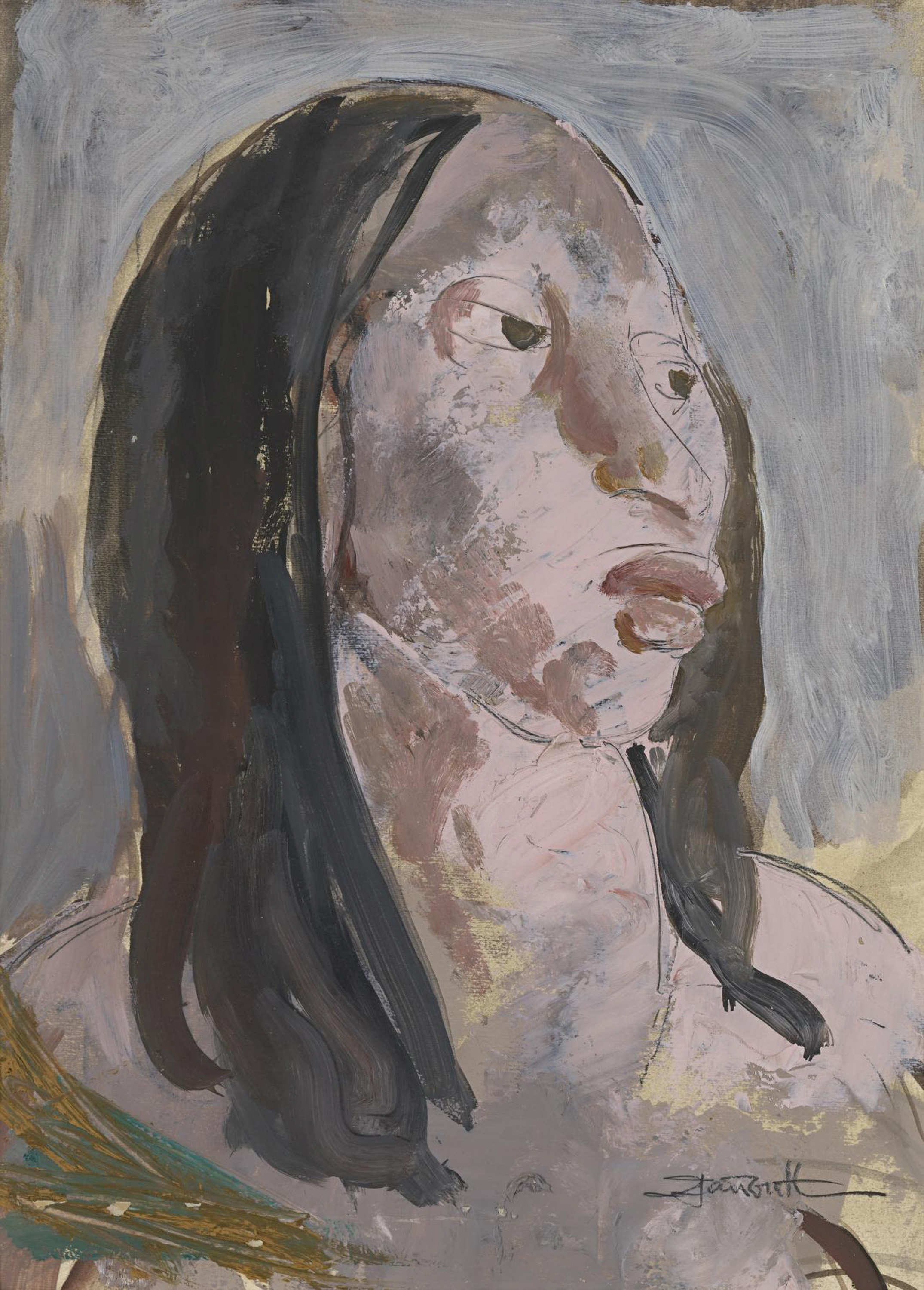
Licensed by Copyright Agency, Australia
Head, c.1934 (lot 10) was possibly painted, or at least started, in Bali as it has much in common stylistically with other Balinese works and was exhibited during the artist’s lifetime as `Balinese Dancer’. The sketched-in, rounded forms of face and arms and the muted palette are also consistent with other Balinese works, such as Head of a woman, 1933 (National Gallery of Victoria) as well as a plaster likeness that Fairweather made in 1946 while staying with Lina Bryans.
The next decade was so difficult it makes the Shanghai years seem like Shangri-la. Finding himself by mistake in Western Australia (he had been aiming for the east coast) he went to Colombo where officials took most of his money and sent him packing. He then hopped on a boat to Melbourne which, in its dreary monotony, reminded him of the most dreary suburbs of London. Describing it as a ‘matriarchy’ with a million perfect homes and the pubs always closed, he loathed the rigidity of parochial Australian life, though he met and mixed with George Bell and members of his circle. It was, he wrote, the first time he did not feel like a criminal for being an artist. Living rough during the Melbourne winter was testing however, as was an attempt to complete a commissioned mural for the Menzies Hotel. He exhibited work with Cynthia Reed in March and at the Athenaeum in July with the Contemporary Art Group. Illness and the cold propelled him to head north once again.
He landed in Davao, living on the beach with some very noisy neighbours who made a racket night and day. He hated the food, the heat, the people and whinged unceasingly to poor Ede and occasionally to Frater in his letters. Despite all these irritations, he was able to produce many works, sending bundles of ‘sketches’ to Ede for sale. Filipino Girl Carrying Fruit (lot 13) is possibly from this time. In it the artist uses a technique of dappled paint to fill in a pencilled outline which is familiar to other work he did in Davao.
From there he went to Peking (Beijing) where he lived in poverty and was thoroughly miserable: the heat, the cock that woke him at four every morning, every little thing… though he was able to take a bus and tramp all over the hills where once again he was amongst the farms and outlying villages. It was then that he probably painted Landscape with horses, c.1936 (lot 7) which appears to have been painted in a temple garden with Tang statues of horses (terracotta or bronze) on plinths guarding the entrance. The scene is sketchy, a quick impression in a palette of soft greys and browns. A path, or river, takes the eye to the trees and blue sky beyond.
In his letters to Ede and Frater, he observed the slow encroachment of the Japanese in China and the atmosphere of suspicious observation that came with them. It inhibited his movements and work, and put him out of sorts. He gave up smoking and was irritable. The cold was almost unbearable. He left, traveling through remote parts of Indonesia until he arrived at last in Zamboanga in the Philippines where he stayed put and began to paint memories of Shanghai, of Soochow Creek and the tea gardens in Hangchow. These works were sent to artist Lina Bryans in exchange for the help she gave him – money which kept him alive. In the process he lost every material thing he owned several times: once in a house fire he accidentally set; he was hospitalised after injuring his hand which caused the removal of half a finger; he scraped himself while diving for coral, the wounds turning septic; and he fell ill with one cold after another...
In the following years, he lived in Cairns, Brisbane, Calcutta, Cooktown, and Bribie Island. For a while he was happy there and got to work for the first time in years – though it was short-lived. Someone took the sail from his boat and then a few days later his watch (‘my last remaining luxury’), and worst of all, his diary of the previous eleven years in which he had jotted down everything. It was a terrible blow and he left for Melbourne.
NEW FAIRWEATHER CHILDREN IMAGE_cmyk.jpg
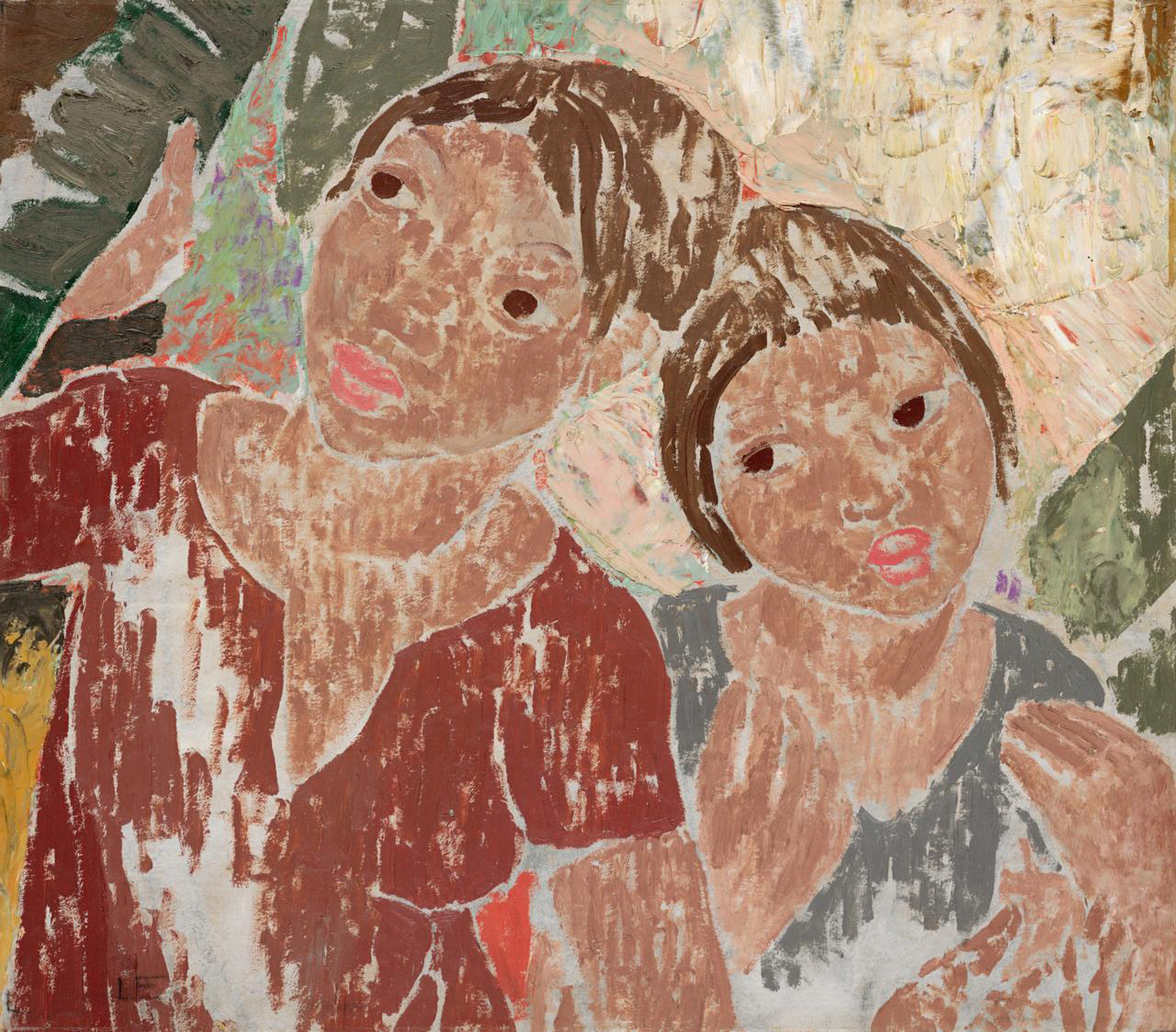
Licensed by Copyright Agency, Australia
Several works in this sale – those of Soochow and Foochow – (lots 5, 6, 8, 9 and 11) can be dated from this period which was one of relative stability. He moved into a room in Lina Bryans’ house in Darebin and once again, sleeping during the day and working through the night, after two years sent forty-five paintings to London with a friend Laurie Thomas. He was from the first a loyal supporter who, on becoming director of the Queensland Art Gallery in the 1960s, would mount the first major exhibition of Fairweather’s work. Unfortunately, the next bundle of over one hundred works which Fairweather sent directly to the Redfern arrived so badly damaged, they had to be destroyed.
It is significant that the stolen diary – possibly containing sketches and notes on compositions as well as diary entries of places and names - pushed him to paint so many Chinese scenes, as if he needed to pull them from his memory before they faded into thin air. The last vestige of the past, of all his travels and experiences and that in losing them he was set free. They are evocations of mood and feeling, glimpses of places in quickly realised brush strokes and splashes of colour, rather than literal scenes. In a letter to Ede (who was now living in Tangiers with his wife) he wrote: ‘I just had to do them – there are many variations of the same subject… the ones I came up against and couldn’t do – I felt it was no good going on painting till these ghosts were laid – I’ve finished with them – though sometimes in 10 different ways – and perhaps never satisfactorily – but I do feel that doing them has carried me quite a stage farther along the road…’5
One work here Street in Soochow, c.1948 (lot 8) painted after he left Melbourne and went to Cairns is more abstracted than previous Chinese-themed work and seems to have been executed in more speedily. He was a colourist, not a draughtsman. He liked to paint nature, the human form, and was never happy with total abstraction.
Itinerant for most of his life, Fairweather finally settled on Bribie Island in 1953 for what would be his final twenty years. There he was often visited by friends who dropped in to play chess or chat about art and books and down a whisky or glass of red. Those who recognised an artist of outstanding talent. Finding success and fame late in life, a narrative sprang up about the eccentric ‘hermit’ artist who eschewed normal life and lived in a hut on a remote island. It brought him a kind of celebrity status, though one he disliked, for it was never the whole story.
1. Roberts, C. and Thompson, J., Ian Fairweather: A Life in Letters, Text Publishing, 2019
2. ibid., p. 324
3. Roberts, C., Fairweather and China, Melbourne University Publishing, Melbourne, 2021
4. Roberts & Thompson, op. cit., p. 435
5. ibid., p. 145